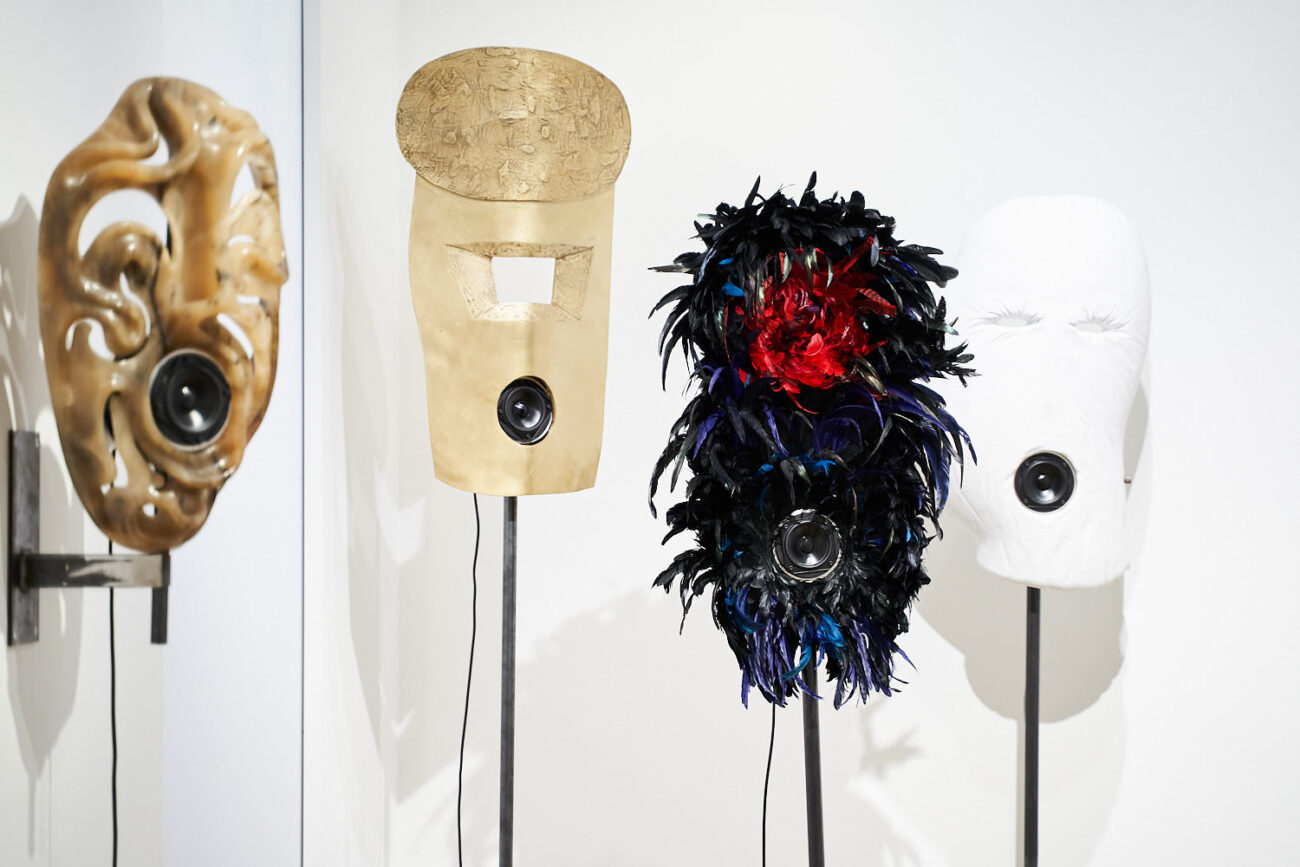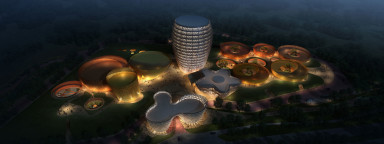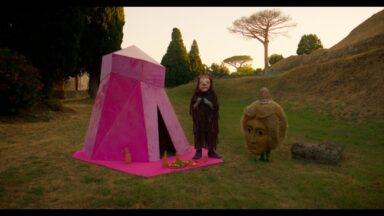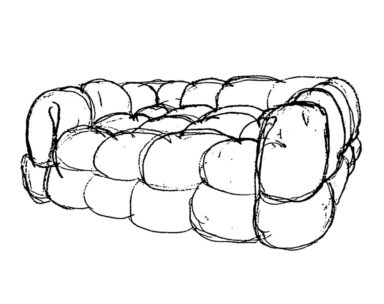E T E R E is an exhibition by artist and composer Yuval Avital curated by Annette Hofmann. A dreamlike tale divided into four chapters that brings together more than one hundred works, many of which are exclusive, specially conceived for the four floors of BUILDING, the Milan-based location hosting the event
Text by: Domenic0 Costantini
The opening of Avital’s exhibition is the fable “The Heart and the Fountain” from the “Tale of the Seven Beggars” by the 18th century Rabbi Nachman of Breslov. In the story, the world possesses a Heart that burns with longing for the Source of water that lies at the other end of creation. The Source also yearns for the Heart, but they live far apart in time and space without the possibility of reaching each other; still, they never cease to desire one another. Before the day ends, however, the Source dries up and, consequently, the Heart dies out in its grief, putting an end to the life of the world. The Just Man gives a new day to the Heart, and the Heart to the Source, so that they may be reborn together. Like the Heart of the World in the fairy tale, Man in the artist’s vision is a being who is by nature incomplete, constantly hunted by a feeling of absence that drives him to search for his true self and his missing part in physical, psychic, and metaphysical reality. On his way, he encounters Angels and Demons, experiences Love, Mourning, and Nostalgia, aspiring to the Transcendental and the Utopian Ground. The unbridgeable gap between Man and Things is the vector of this journey and constitutes the essence of the project.
On the ground floor of the exhibition space there is the Cuore (“Heart”) with the installation Cuore di Etna (“Heart of Etna”); both earth and water with a sound evoking the song of the volcano, made up of ultrasounds not audible to the human ear and recorded by INGV the the Italian Institute of Geophysics and Volcanology. This work of great impact was exhibited on the occasion of a solo show by the artist a few years ago at the Museum of Science and Technology in Milan.
In the same setting visitors can watch three videos, three signs of a single large video score from the Foreign Bodies1 series, made in the Blenio valley in Switzerland for the solo exhibition at the Fondazione Fabbrica del Cioccolato. The artist was responsible for the sound, the direction of the contemporary dancers who moved under his directions, the overall direction, and the editing. In the natural spaces, the naked bodies draw positions that reproduce those studied by Avital on paper. What emerges is a representation of nature that highlights man’s dialogue with it but also his detachment from it. It is no coincidence that the videos were made in winter, when nature is so hostile that after ten minutes the dancers were covered with thermal sheets.
At the centre of the room is Singing Tubes, called Mammouth by the artist, a form that mimics the idea of the animal skeleton and rises up, soaring like a prelude to the upward journey that awaits us. In the Jewish culture echoed in each work, souls rise through a tube, here covered with gauze and white plaster. Leaning your ear against the work, which looks almost like a shroud, you can hear the artist’s voice coming from within, almost a litany, reminding you of the soul.

Singing Tubes
Another stage is marked by the photograph Foreign Bodies 2, taken in Saxony, where he filmed dancers inside a hydroelectric power station: the link with water is always present and in this context it is enriched by the complexity of the relationship with Germany due to the weight of history, even though one of the artist’s grandmothers was from Dresden.

Foreign Bodies 2
Finally, the session includes the series “Rorschach’s Angels,” the famous psychoanalyst, which comprises the artist’s first paintings, from 2018, the year in which he began painting. These are figures made without a plan, almost grotesque, very spontaneous, sketched on the spur of the moment: men floating in the ether between pieces of colour as in a mosaic. The dimension is strongly emotional, becoming almost self-portraits, with an ironic note.
On the first floor, the Forest chapter symbolises the unconscious. Here we are greeted by archetypal masks, singing masks made for the exhibition held in the crypt of the Church of San Pancrazio inside the Museo Marino Marini in Florence, made together with craftsmen, each of which has the sound of the voice of its own demiurge.
This is a very important aspect, because for Avitall art is participation, and even in the case of these works the evocation refers to the Hebrew mythology of the giants. In this part, the space is occupied by black and white photos depicting ravens, symbols of restless souls and death, printed on aluminium plates; photos with a recording of lights, made in Taiwan on a mountain where sacred hunting is practised; and paintings made between 2018 and 2020 where words dialogue with the image as in the Dragon depicted and quoted in the word. The challenge is met with Medium Armageddon, a large work measuring 147 x 225 cm in which the painting weighs more than the paper support.

Medium Armageddon
The third level is occupied by Light, an installation that takes on a rarefied quality; here the works lighten up and the drawings depict birds, the symbol of the soul. At the centre of the room, there is a Mediterranean Altar, from 2020, rearranged for the occasion, represented by building bricks that symbolise construction but also squatting; a loudspeaker; a bowl that indicates the table but also the difficulty of living. In fact, in Jewish culture, during the holidays those who cannot afford an instrument beat on the bowls; a bell and chickpeas, also symbols of nourishment, which evoke the sacredness of sound because they move in a choreographed and ever-changing way with the voice.
On the top floor we find ourselves in the Ether, in a dark room with a situation of total immersion that presents a selection of video works with sound and where water returns as the protagonist. In this environment there is the sense of man’s aspiration to heaven, of its mercy.
The journey can start again in the opposite direction; this is probably the most significant feature of the path as well as of the visual and acoustic planes that join one another.



